Spartan scientists help agriculture adapt to a changing planet
The statistics are familiar. The world’s population is expected to increase by nearly 50 percent in the next century, while the demand for agriculture crops is expected to more than double by 2050. The extreme weather anomalies caused by climate change are expected to continue and worsen in the future, which could substantially reduce agricultural production globally. Meeting these challenges requires scientists such as those at MSU who are applying the latest science and technological innovations to solve tomorrow’s problems in a sustainable way.
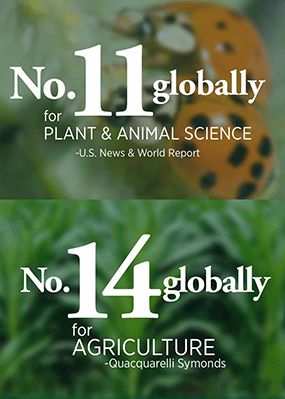
MSU is ranked No. 14 globally for agriculture and No. 11 for plant and animal science. Spanning multiple departments across the university, MSU has one of the highest concentrations of plant scientists in the world. With its 5,200-acre campus outfitted with research laboratories, greenhouses and trial farms, and 14 outlying agricultural research centers strategically located throughout Michigan, the university fosters an interdisciplinary environment where collaboration and innovation are second nature.
Many of MSU’s agricultural innovations are home-grown locally in the lab and field, but their applications span the state, nation and world.
Increasing crop yields with high-tech solutions
Crop scientists spend years cultivating new plants to produce higher crop yields. MSU’s Bruno Basso can speed up and fine-tune that process by creating computer models of farms. Basso is an ecosystems scientist, a John A. Hannah Distinguished Professor and an MSU Research Foundation Professor in the College of Natural Science (NatSci) and the College of Agriculture and Natural Resources (CANR).
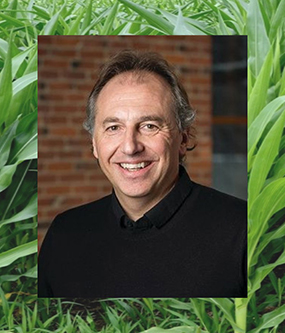
Using technology invented at MSU, Basso and his team combine data from soil, climate and the ground collected from sensors installed on self-driving tractors that monitor the crops’ yield and in the air from drones or satellites flying overhead to measure crop health. Together, this information creates a “digital twin” of farmland to model crops before any seeds are planted.
“Once you have the ‘digital twin,’ you can test different management practices before you put them out into the real world,” Basso said. “We model crops by growing them on the computer.”
This information is the basis for a farmer’s “prescription map” to help optimize their farms and identify ways to make the soil healthier.
“Just like when you go to the doctor, we give farmers a prescription for their fields with information on the best crop to plant or how much water and fertilizer they should apply to get the highest profit with the lowest environmental impact,” Basso explained. “We convert the data into action at a global scale.”
He and his team have worked with hundreds of farmers on thousands of fields across Michigan and the Midwest. Their goal is to help growers — from smallholder farms to industrial producers — and policy makers access the tools and data they need to make better decisions that lead to better outcomes for crops. Basso expects this method could be used worldwide to increase crop production, protect the environment and to help feed a growing population.
“We don’t just help Michigan farmers, because science must be global,” Basso said. “MSU’s goal is to provide innovation and advancement in science that helps feed the world and protect the environment.”
Engineering resilience
“We're facing this really difficult situation in terms of the environment and climate changes that is affecting the lives of humans, animals and plants,” said Seung Yon “Sue” Rhee, the new director of MSU’s Plant Resilience Institute and MSU Research Foundation Professor in NatSci and CANR. “At the same time, we are experiencing an explosion of technologies that are coming out.”
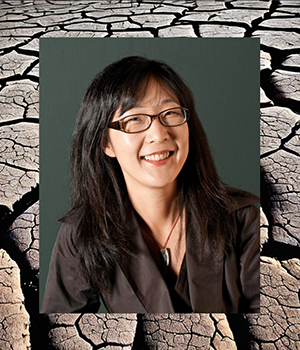
Rhee and her team are focused on how plants persevere against heat and drought, with the hope of being able to engineer these resilience traits into different types of plants, which could improve agriculture and food security.
“We’re really excited to use single-cell approaches to studying plants, which allows you to probe what’s happening at the individual cell level,” she said. “This is something that has not been explored much before.”
Using this approach, Rhee and her team can study the behavior of a single cell in a plant. “It’s a way of looking at biology beyond genetics,” Rhee said. “Even though the genome of the individual cells in the plant are the same, each cell could have a different response to heat or a pathogen attack.”
Rhee and her team are also part of a multi-institution, cross-disciplinary National Science Foundation grant to study how organisms can survive in extreme drought. Most plant seeds are tolerant to desiccation, or extreme dryness, and Rhee’s team recently discovered a protein that might hold the key to understanding how plants can survive and even thrive with very little water.
Improving plant nutrition from the inside out
In the coming decades, the quality of crops will be just as important as the quantity.
“The population is growing, resources are shrinking, and it’s obvious that we have to improve plants,” said Federica Brandizzi, a NatSci plant biologist and MSU Research Foundation Professor. “Plants are the primary providers of food and oxygen to the planet.”
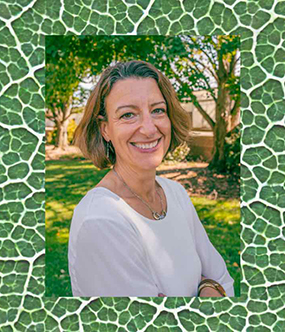
Brandizzi has dedicated her career to finding creative methods for modifying plant cells, helping them to overcome limitations. And she nurtures that same creativity in her team.
A member of the MSU-DOE Plant Research Lab, Brandizzi and her team are focused on growing plants that take up less space, provide higher crop yields and maintain their nutritional value. One solution is to help plants grow larger using molecular genetics that produce more amino acids inside the plant. Amino acids turn on the signal for plants to grow and make the plant more resilient to stress.
Another focus of the Brandizzi lab involves using enzymes to soften the rigid cell walls of plants such as soybeans and sorghum. These more flexible and elastic walls allow these crops to grow, accumulate more dry biomass used as fuel and store more nutrients. The team is also exploring ways for plants to use less water. For example, by controlling the pore-like stomata openings on a plant’s leaves, plants can retain more water and require less of it to grow.
Being able to grow plants with very little water isn’t just of vital importance here on Earth. It will be essential for growing plants in space, something with which Brandizzi has firsthand experience. Recently, she sent a package of Arabidopsis seeds to space on NASA’s Artemis I mission to explore how humanity can sustain itself outside of Earth. Some of the seeds were fortified with amino acids to see how they will grow after being exposed to space.
“We are really excited to see what will happen to these seeds,” Brandizzi said. “This could help us grow plants in space.”
Reducing threats to food supplies
Shrinking freshwater sources threaten the ability to increase yields of vital food crops through irrigation. MSU scientists are finding that the right balance requires precision, which also helps reduce exposure to harmful chemicals in the food supply.
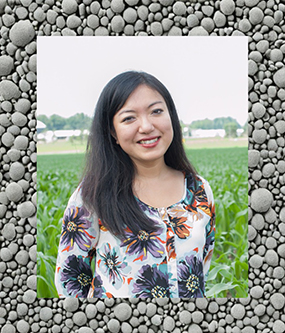
“Our water table is sinking across the United States, so it’s getting harder and harder to irrigate crops,” said Felicia Wu, a John A. Hannah Distinguished Professor and international expert on food safety in the Department of Food Science and Human Nutrition at MSU. “This is a big concern for growing crops like rice in the United States and other countries that require a lot of water to flood the paddies.”
Wu and her team are exploring an alternate wetting and drying method for producing rice that uses much less water without decreasing crop yields. There are implications for food safety as well. While a rice production method that reduces soil moisture decreases the levels of arsenic in rice, it increases the levels of another toxic heavy metal, cadmium.
“We are looking at the cost effectiveness and feasibility of different ways of getting rid of arsenic, cadmium, lead and mercury in our food supply,” Wu explained. “Sometimes, based on soil conditions, it can be a challenge to successfully reduce crop uptake of all these metals.”
Wu is working with MSU colleagues Hui Li and Wei Zhang to assess Americans’ dietary exposure to heavy metals and examine potential health effects as well as determining the feasibility and economics of strategies such as soil amendments to reduce these metals in food.
“We are trying things like adding biochar to the soil to keep the heavy metals in the ground and out of our plants,” Wu said.
Additionally, Wu is examining how near-term climate change will affect the risk of aflatoxin in the supply of corn in the United States. Aflatoxin is a fungal toxin that can cause liver cancer in humans. While there is an expected increase in aflatoxin risks in key Midwestern states, there are opportunities for change, including potential biotechnology solutions to reduce the risk of fungal infection of corn and other crops.
Revealing hidden ways to improve farming
At MSU’s W. K. Kellogg Biological Station (KBS), researchers have been conducting experiments for more than three decades through its NSF-funded Long-Term Ecological Research program. The program is dedicated to understanding the ecology of agricultural systems.

“Climate resilience is becoming increasingly urgent as climate change becomes more apparent,” said Phil Robertson, a University Distinguished Professor of plant, soil and microbial sciences at KBS. “Being able to tolerate drought, floods and heat has always been important but now it is becoming essential.”
Robertson and his team study the fundamental reactions that take place in soil. The researchers apply this information to design better cropping systems. For example, researchers have been observing the effects of farmers tilling versus not tilling their soil for decades, but until recently the team didn’t know why it took an average of 10 years of no till before farmers consistently saw positive results.
“Now, we have a pretty good idea of why it’s beneficial and takes so long,” Robertson said. “Not tilling the soil makes it more resilient to micro-droughts.”
Micro-droughts are extremely local drought events that are short-lived. Robertson and his team found that no-till soil has a greater variety of pores, which helps the soil retain more water overall. This is key to no-till farms surviving micro-droughts and more consistently producing higher crop yields over time.
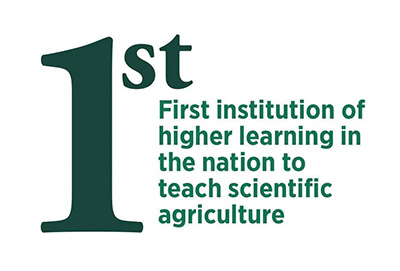
KBS — one of North America’s premier inland field stations sitting on nearly 4,000 acres in southwest Michigan — is also a leader in biodiversity, conservation, greenhouse gas mitigation and soil and water quality research. All of these areas are important to crop success and the impact of farms on the environment.
“It’s important to understand the effects of individual farming practices on farm health now and under future climates,” Robertson said. “But it’s even more important to understand how different practices can act together to provide the benefits we expect from agriculture. That’s our aim.”
At MSU, researchers who study biology, plants, soil and ecosystems work together and are inspired by the interdisciplinary environment to take on the agriculture and global food challenges of tomorrow.
“People are willing to collaborate not just in my departments, but pretty much all over the university. I think that's one of MSU’s greatest strengths,” Brandizzi said. “MSU is a very collaborative institution and it provides the tools, means and structure to make that happen.”Banner image: Michigan State University’s renowned plant researchers are collaborating on solutions to grow more abundant, nutritious and resilient plants that will feed a growing population. Pictured L to R: G. Philip Robertson, Federica Brandizzi, Bruno Basso, Felicia Wu and Sue Rhee. Credit: Deon Foster, University Communications